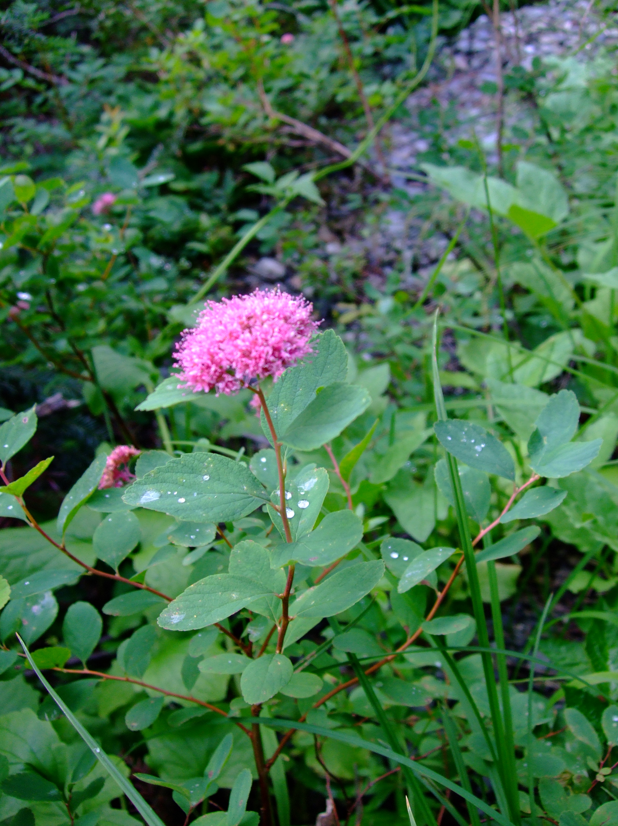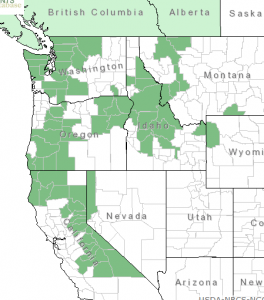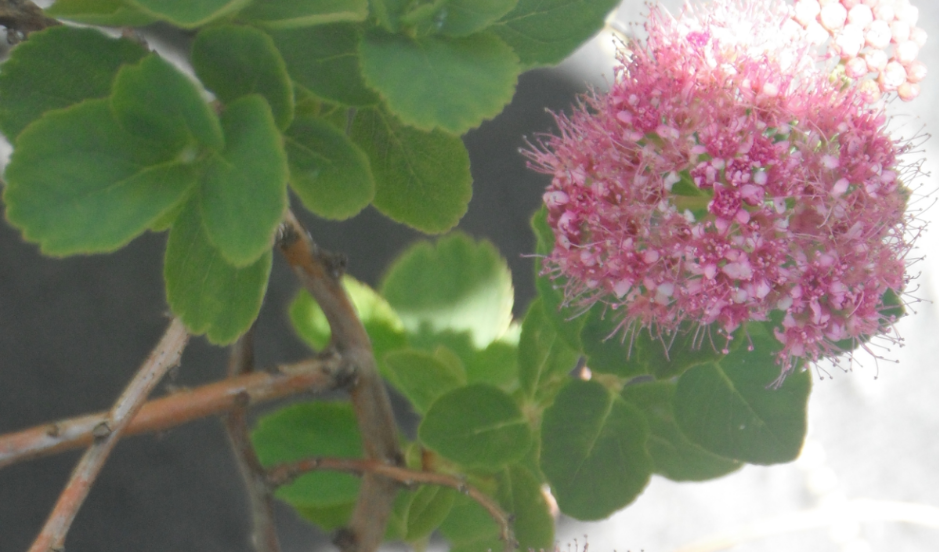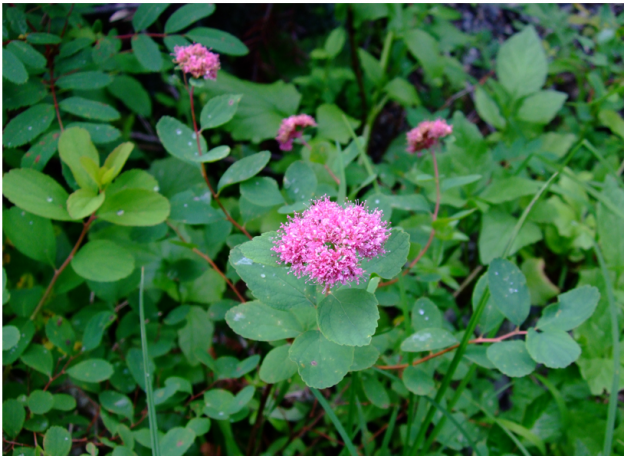Subalpine Spiraea
Spiraea splendens Baumann ex K. Koch The Rose Family–Rosaceae
(spy-REE-uh SPLEN-dens)
 Names: The word Spiraea comes from a Greek plant that was commonly used for garlands. This species is also known as Spiraea densiflora. Splendens means shiny, densiflora means dense flowers. Subalpine Spiraea is also known as Rosy Spirea, or Rose or Mountain Meadowsweet.
Names: The word Spiraea comes from a Greek plant that was commonly used for garlands. This species is also known as Spiraea densiflora. Splendens means shiny, densiflora means dense flowers. Subalpine Spiraea is also known as Rosy Spirea, or Rose or Mountain Meadowsweet.
Relationships: There are about 80-100 species of spiraea in the temperate regions of the northern hemisphere-the majority in eastern Asia. Many are grown for ornamental landscaping and there are several cultivated varieties, mostly of the Japanese species.

Distribution of Subalpine Spiraea from USDA Plants Database
Distribution: It is found from southern British Columbia in the Olympic and Cascade Mountain Ranges to the Sierras in California and Nevada; eastward to the Rocky Mountains, Alberta, Idaho & Montana & Wyoming.
Growth: Subalpine Spiraea grows 2-3 feet (60-90cm)
Habitat: It is found in moist meadows, on streambanks, and open, rocky slopes.
Diagnostic Characters: This species has round to oval (toothed near the end), shiny, bright-green leaves; reddish-purple bark; and flat-topped clusters of pink to purplish flowers.
In the Landscape: Subalpine Spirea, with its bright pink flowers, is an attractive addition to the landscape. Flowers are sweetly scented, reminiscent of cloves. It is especially useful when a smaller shrub is desired. It has great potential for mixing with Shinyleaf Spiraea in borders or foundation plantings.
Phenology: Bloom time: June-August.

Propagation: A 60-75 day cold, moist stratification. of seeds is recommended. Cuttings also are also possible.
Use by People: Flowering stems were used as paint brushes, especially on the large spaces of teepees by the Blackfoot.
Use by Wildlife: Subalpine spiraea is considered a poor forage species and also does not provide good cover. But is possibly a good species for pollinators such as butterflies.
Links:
Consortium of Pacific Northwest Herbaria
WTU Herbarium Image Collection, Plants of Washington, Burke Museum
E-Flora BC, Electronic Atlas of the Flora of British Columbia
Jepson Eflora, University of California
Ladybird Johnson Wildflower Center
Native Plants Network, Propagation Protocol Database
Native American Ethnobotany, University of Michigan, Dearborn

